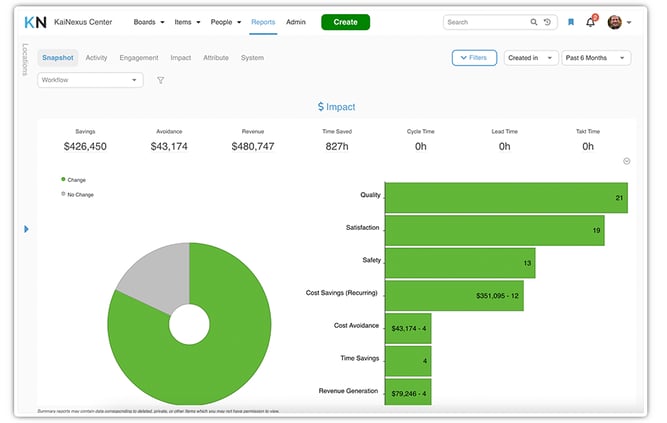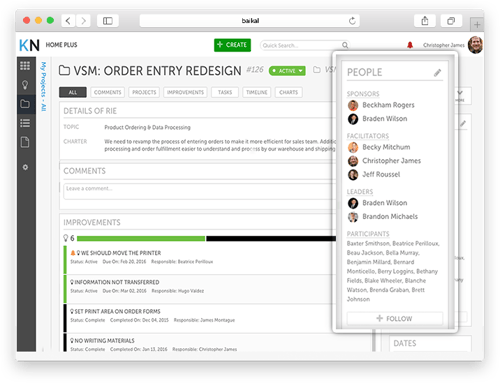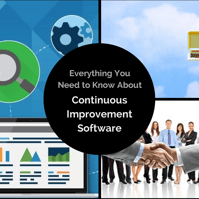
Rapid Improvement Events
Focused Improvement
Strategic Events Solving Critical Problems
Rapid improvement events, also known as Kaizen events, involve a small team devoting 100% of their time over three to five days to analyzing and improving a narrowly defined targeted issue or process. Rapid improvement events are used to augment, not replace, daily continuous improvement.
Rapid improvement events are an important tool in the Kaizen toolbox. They are great for ensuring energy gets focused on a particularly challenging problem or one that needs to be solved pronto. We’ve seen them produce terrific, long-lasting results. We’ve also seen them devolve into a disorganized mess. Without clear direction and effective communication, the event can become a demoralizing waste of time.
How can you ensure the success of your next rapid improvement event and avoid the pitfalls experienced by so many others? Here’s our best tip – use software to manage the project before, during and after the event.
Before the Event
The success or failure of a rapid improvement event depends very much on what happens before it even begins. Key steps in the planning stages are:
- Assembling the team
- Selecting or hiring a facilitator
- Determining the target process and scope of improvement
- Gathering and analyzing baseline data
- Defining success
- Communicating the planned event and its goals
- Identifying the Target ROI for the event
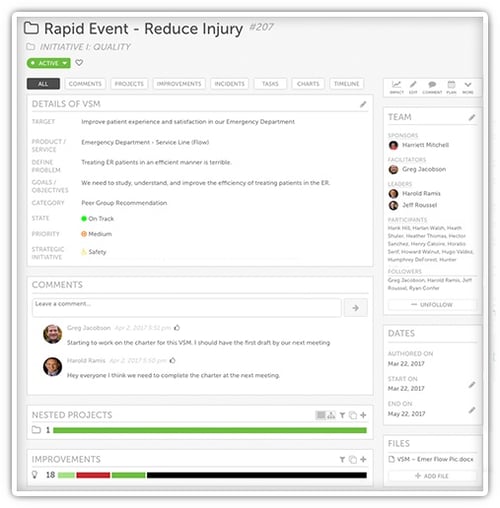
Software can’t do all of that for you, of course, but what it does is provide a platform where all of this information can be stored and shared. Team members have one place to go to provide input and review relevant information prior to the event. Assignments for data gathering can be made and communication channels established. When the event begins, everyone is armed with what they need to be effective and efficient.
It is also important to validate that the event is aligned with one of the organization’s strategic goals. It is ideal if the same software is used for improvement management as well as for strategy deployment. This makes it easy to correlate the planned improvement event to the overarching objectives of the company. Everyone understands how this work will propel the organization toward true north.
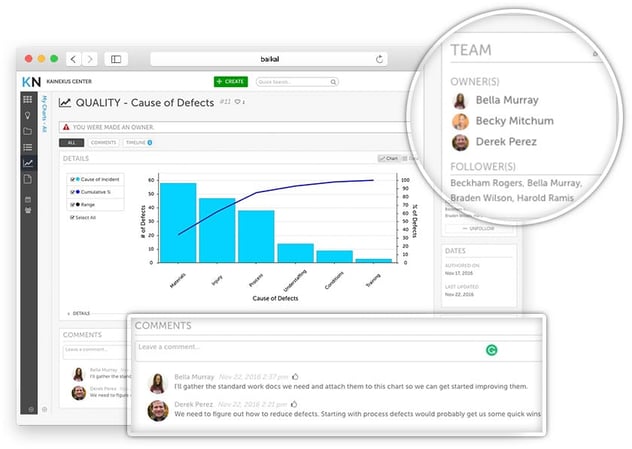
During
Rapid improvement events are intense and focused, usually lasting only a few days. During the event team members:
- Define the problem
- Identify and document all parts of the current process
- Analyze the current process to identify risks, waste, and other problems
- Agree on the best plan for improvement
- Create a roadmap of the new process
- Determine how results will be measured
- Implement the plan
- Measure results
- Communicate the improvement and results
- Track your projected ROI against your target
After
Too many companies make the mistake of thinking that when the event is over, it’s over. Don’t let that happen to you. What happens after the event is crucial. Key activities include:
- Documenting the event, its results and any lessons learned
- Updating Standard Work documentation if needed
- Defining intervals for status measurement and reporting (30 days, 60 days, 90 days, etc.)
- Evaluating the rapid improvement event process and experience to determine if it could be improved
- Recognizing the achievements of everyone who contributed
- Compare predictions with actual ROI to get better at forecasting results
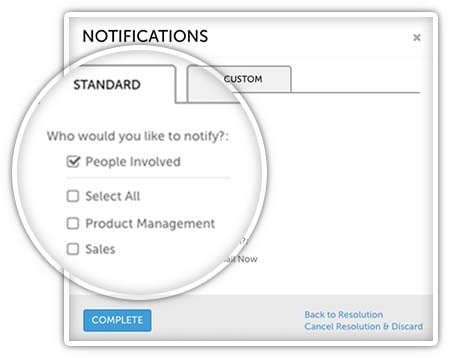
Rapid improvement event software makes all of this painless. It is used to calculate the impact of the improvement over the short and long term. Reminders are set up that ensure updated reporting occurs at regular intervals. It also serves as the organization’s repository of knowledge so that the work done during this event can be used to inform the next. Best practices and lessons learned are identified to make each improvement event better than the last. Some solutions offer improvement broadcasting so that the whole organization can be easily notified about what was achieved and who made it happen.
Improvement software is also useful in terms of reporting the cumulative effect of all rapid improvement events throughout the quarter or year. Executives can easily tabulate what these events have meant in terms of cost savings, efficiency improvements, improved quality, better customer satisfaction scores, or whatever other metrics define success. This helps create a big picture view of why improvement matters and justifies future attention to this type of work.
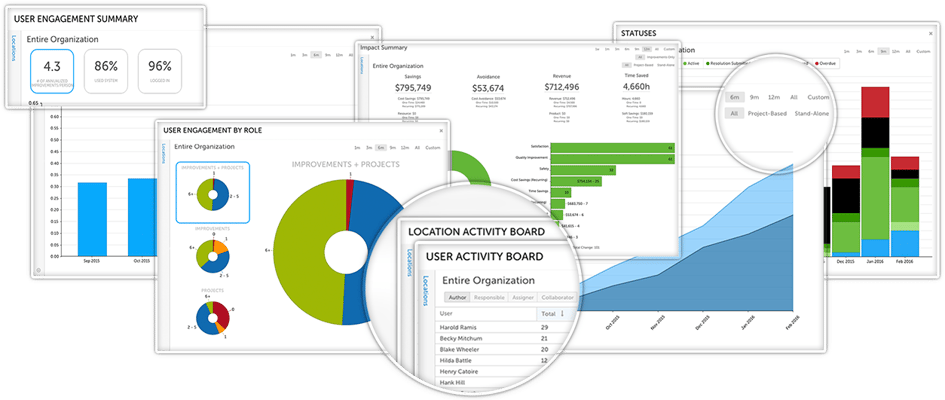
Improvement Software Book
Next Steps
Critical Questions to Ask Once the RIE is Over
What went right?
It is smart to look for the things that worked well so that they can be documented and repeated. Perhaps a particular improvement cycle like DMAIC was central to the positive outcome; this is worth noting. Make sure to talk to people about what went right, too. It may seem like a no-brainer, but it's so easy to fall into the trap of jumping straight into what went wrong and should be improved. By taking a few minutes to focus on the positive and recognize the people who contributed, you'll boost morale and encourage future engagement.
What went wrong?
Almost every improvement event will have a few hiccups. Identify them and discuss ways that they might be avoided in the future. Were there steps missed during the planning phase, or were important stakeholders overlooked? A bit of root cause analysis on the obstacles faced during your event will help you improve on the next one. The most important thing here, though, is to make sure that you're looking for WHAT went wrong, not WHO did it. Pointing fingers won't do you any good. Instead, focus on ways to improve so that no one makes the same mistake again.
What was the result of the improvement compared to the baseline?
You had a baseline, right? OK, good. Now you can apply the objective measurements that you identified before the event to determine how much improvement was achieved based on your specific goals. It's worth taking the extra time to at least estimate your starting state, even if you're improving something that is hard to get firm, accurate data around. If you skip this step, it'll be a lot harder to demonstrate the impact of the improvement afterward.
How will we sustain the improvement?
This is a big one. Without a specific plan and people with accountability, all of your efforts may be for naught. Select appropriate intervals at one month, six months, one year, and so forth to check the metrics and report results. Make the necessary updates to Standard Work and don’t skimp on training. Make sure that you log it in an improvement software platform, so that people can do a simple keyword search for it later when working on new projects in that area.
How will we measure the impact of the improvement over time?
It is great to know immediately how you are doing vs. the baseline, but ideally, your improvement efforts will bring you returns far into the future. There may be things that don’t make sense to measure immediately but will be informative in six months or a year. Right after the event is a good time to figure out what they are. Keep in mind that it isn't just the financials that matter; qualitative improvements such as quality, safety, cycle time, and staff and customer satisfaction are critical to business success as well.
Who can we thank?
Recognition and appreciation fuel an improvement culture. Don’t miss the opportunity immediately following your rapid improvement event to thank the team members and others who contributed to success. Doing show reminds everyone that you value their work and respect the unique input they bring to the table, thus encouraging them to engage even more in the future.
Did we uncover any opportunities for incremental improvement?
Not every improvement requires a full-scale rapid improvement event. Incremental improvements can, and should, be made every day. It is not uncommon that during an improvement blitz, teams identify smaller opportunities that should be documented and implemented in between events. Improvement software will help you keep track of those (and the event, of course) so that nothing slips through the cracks once attention has shifted from the event elsewhere.
These questions form a good basis for a post-event debrief with the participants. They also make a great structure for reporting the results and lessons learned from your event to executive leaders. When it comes to rapid improvement events, it’s not over when it’s over.
Do You Need RIE Software?
Here's How to Decide
What Are You Trying to Accomplish?
Set aside the specific goals of any one particular event for a minute, and examine the bigger picture related to improvement events. Think about why you do them. Do you hope to achieve lasting change or are you looking for a quick fix? If what you are after is improvement that will last and have a big impact on the organization, then it doesn’t make too much sense to conduct your event without software.
With software designed to support improvement, you’ll have a complete record of all of the decisions and ideas discussed during the event. All of the related documents will be available for any stakeholder to review. The current state analysis, event goals, and final outcomes can be shared with everyone in the organization. Without technical support, activities, documents, and decisions will be scattered about in email chains and stored on personal PCs, making the context of the event undecipherable and debatable.
If you want long-term knowledge that outlives the event and spreads beyond the initial context, you need improvement software.
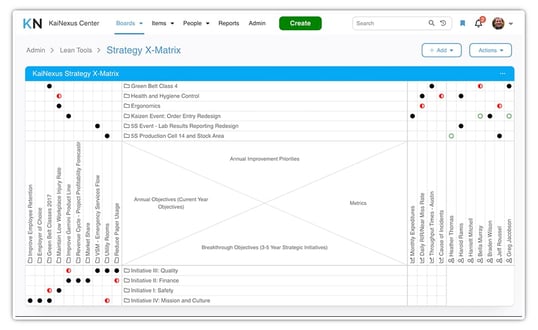
How will you measure success?
At the outset of your rapid improvement event, you’ll want to define its goals and determine what success looks like. It is usually fairly easy, with or without software, to decide if your event achieved its immediate aims, but what about the results over time?
Some improvements take a while to yield any measurable results at all. Others result in cost or productivity savings that recur month after month.
With the right software, it is easy to calculate the impact of improvement for months, even years after an improvement blitz.
Who is Going to be Involved?
Teams that are used to working closely together often have very good communication habits and can get a lot done as a group. However, rapid improvement events often involve cross-functional team members that have different communication styles and preferences. This causes discord and slows down the pace of improvement, a deadly sin during rapid improvement events. Improvement software provides a common space for collaborative work and defines a unified language. Everyone gets easily on the same page and enjoys smooth sailing.
So sure, you can do a rapid improvement event without software…unless you want lasting improvement, long-term measurement of results, and cross-functional collaboration. In that case, it makes sense to find a platform that will support your efforts. Look for a solution that will capture all of the activities associated with the event, provide notifications and alerts for quick action, make it easy for team leaders to identify roadblocks, and calculate the impact of the event over the long run. You’ll be glad you did.
![[Watch Now] Top-Down Improvement Software Demo](https://no-cache.hubspot.com/cta/default/326641/2eef07b8-9131-49c5-9adc-bafb52e8796e.png)



